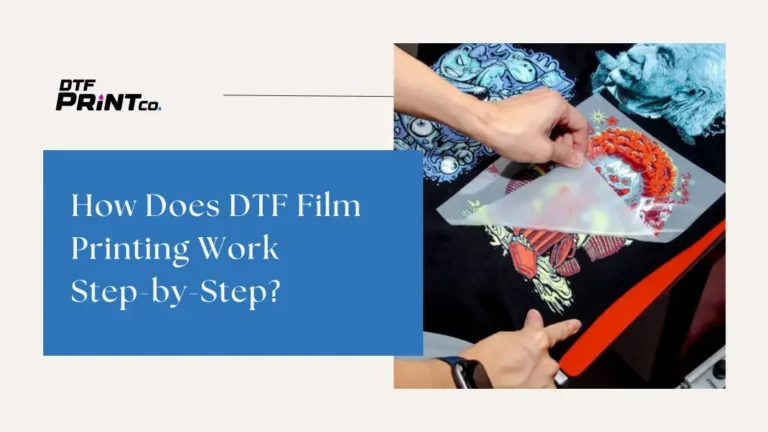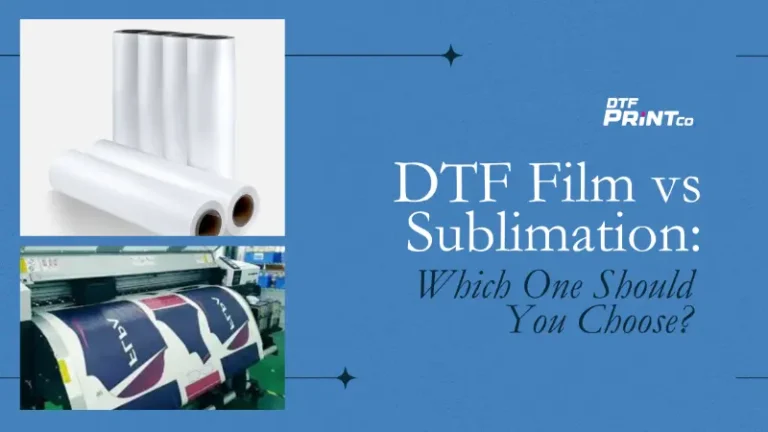
The Difference Between Hot Peel and Cold Peel DTF Film
Direct To Film (DTF) printing is rapidly becoming a popular choice for custom apparel and garment decoration. Unlike traditional screen printing or direct-to-garment (DTG) methods,

DTF printing on stretchable fabrics can be a game-changer, but it comes with unique challenges. If you’ve ever dealt with cracking designs or peeling prints after just a few washes, you know how tricky it can be. The good news? With the right techniques, materials, and a little know-how, you can create high-quality, long-lasting prints that move seamlessly with the fabric.
In this guide, we’ll walk you through everything you need to know to optimize DTF printing for stretchable fabrics—from choosing the right transfer film to mastering heat press settings. Let’s dive in!
Stretchable fabrics, such as spandex, elastane, and certain polyester blends, pose unique difficulties in the world of direct-to-film (DTF) printing. Unlike rigid cotton or polyester, stretchable materials expand and contract as they are worn and washed. This movement can cause standard DTF prints to crack, peel, or fade over time.
Common challenges include:
By addressing these challenges with the right techniques and materials, you can achieve professional and long-lasting results.
Not all DTF transfer films are created equal, and when it comes to stretchy fabrics, selecting the right one is crucial. Here’s what to look for:
To test if a film is suitable, apply it to a sample fabric, stretch it, and observe whether it maintains its integrity. If cracks or distortions appear, consider switching to a more elastic transfer film.
Ink and adhesive powders play a significant role in the longevity and flexibility of your DTF prints. Here’s what you need:
Using an ink that can withstand multiple stretches without breaking apart is crucial for creating a long-lasting print. Adhesive powders should bond well with the fabric, even after multiple washes.
When designing for stretchable fabrics, keep these tips in mind:
A well-thought-out design can prevent issues with distortion and ensure the print remains visually appealing even when stretched.
Proper heat press settings ensure your designs bond well without compromising fabric flexibility. Follow this quick guide:
| Step | What to Do | Why It Matters |
| Set Temperature | 300-320°F | Prevents fabric damage |
| Pressing Time | 10-15 seconds | Ensures proper adhesion without over-curing |
| Adjust Pressure | Medium pressure | Prevents excessive stretching |
| Stretch Fabric | Pre-stretch before printing | Keeps design shape intact |
| Double Press | First press firm, then light | Ensures durability and color vibrancy |
Using excessive heat or pressure can make the design brittle, leading to cracks. Always follow the recommended settings for your specific fabric.
To make sure your prints stay intact over time, follow these key practices:
A well-adhered print will withstand the rigors of everyday wear and washing, maintaining its original quality.
Sportswear requires extra durability. Here’s how to optimize DTF for athletic wear:
For sportswear applications, prints must withstand stretching, frequent washing, and exposure to sweat, making high-performance materials essential.
Yes, DTF transfers can be applied to spandex, but you need to use stretchable ink and adhesive powder to prevent cracking. Always test on a sample before full production.
DTF prints can be stretchy depending on the film, ink, and adhesive powder used. Choosing flexible materials ensures the design moves with the fabric without distortion.
For most stretchy fabrics, set your heat press to 310-330°F, medium pressure, and press for 10-15 seconds. Adjust settings based on the specific fabric blend.
To enhance vibrancy:
Mastering DTF printing on stretchable fabrics requires the right materials, proper heat press settings, and smart design choices. By following these best practices, you’ll create flexible, durable, and vibrant prints that hold up through stretching and washing.
If you’re looking for high-quality DTF supplies and expert guidance, check out dtfprintco. We offer a range of premium products to help you achieve professional results on any fabric.
With the right approach, your DTF prints on stretchable fabrics will look amazing and stand the test of time!

Direct To Film (DTF) printing is rapidly becoming a popular choice for custom apparel and garment decoration. Unlike traditional screen printing or direct-to-garment (DTG) methods,

If you’ve ever dreamed of creating your own custom shirts, hoodies, or tote bags without spending a fortune or dealing with messy screens, there’s some

If you’re looking to start or grow a custom apparel business, you’ve probably heard about DTF film and sublimation printing. These are two of the

2023 - 2024 © ALL RIGHTS RESERVED